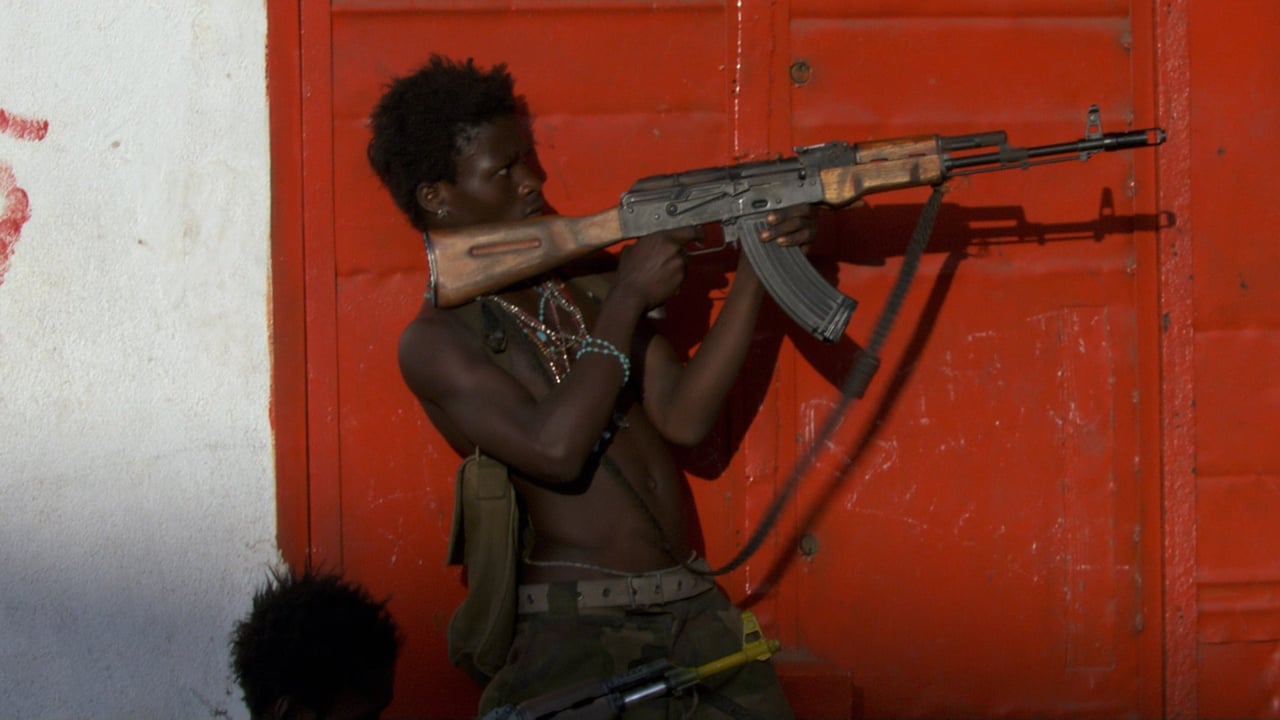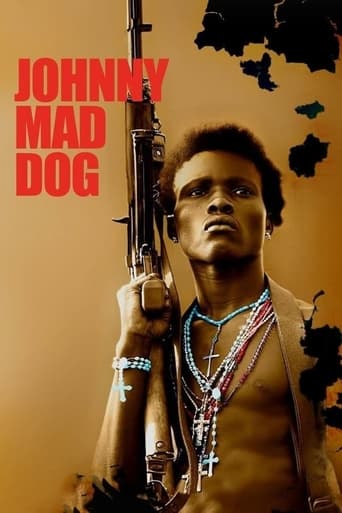

This is a well-made movie, to be sure, with particularly good cinematography that takes you right into the heart of a war zone and never breaks away from it for a second. But it's also an utterly depressing viewing experience, and I hated almost every second of watching it. I wonder if the director would have done better by presenting this as a documentary explaining some of the background of the conflict.JOHNNY MAD DOG follows a group of child soldiers, led by the titular character, as they wreak havoc in Liberia. They're part of a rebel uprising whose goal is to overthrow the president and all those who side with him, and what follows is 90 minutes of rape, cold-blooded murder, and general mayhem.The film is devastating and headache-inducing. There are no glimmers of hope here, no comedy, just unending bleakness. 90% of the dialogue is shouted at the top of the voice and the violence goes on forever, forcing the viewer to become part of the depravity. Needless to say, none of the characters are sympathetic and I spent most of the time hoping for it to end.
... View MoreHaving heard so much about this film...i have to say that the outcome was quite disappointing, considering that the actors were child soldiers themselves. How I wished they could have done more to give viewers more intrinsic detail on a subject rarely explored by films. There is nothing wrong with the acting, as the 'actors' were basically playing themselves with ease. The problem in the movie is that visibility is restricted - we see the same scenario over and over again, only difference is they were in difference locations. Further investigation in other aspects of child soldiering could have easily been filmed (given the child soldiers' participation in this movie) but nothing was being done.
... View MoreJohnny Mad Dog is a war drama in an unknown African country. The movie follows a group of African rebel soldiers that plunder and murder civilians.To make a good summary of the movie, it's 90 minutes of African rebels harassing and shooting civilians with their AK47's. We are given a shaky camera and A LOT of close ups which is confusing since you don't really know what's going on. It ends very abruptly and leaves you with a lot of questions.No characters to care for and no logic. You feel no sympathy for the main character this "Johnny Mad Dog". You just want him to die.I don't know what Jean-Stéphane Sauvaire wanted to say with this movie, and to tell you the truth, you're not missing anything if you don't see it.
... View MoreWhat a gift (though a painful one) to have caught Johnny Mad Dog at a Melbourne Film Festival screening yesterday. The audience was left breathless by this confronting and brutal film. From the first frame, director Jean-Stephane Sauvaire's adaptation of Emmanuel Dongala's novel held the audience captive with its visceral depiction of the lives of two children (though it's sometimes hard to remember that's what they really are) caught up in the careless tornado of civil war.Reminiscent in style and tone of Fernando Meirelles' Cidade de Deus (City of God), the film follows Johnny Mad Dog, a 15-year-old soldier fighting raging hormones and the overpowering effects of systematic brainwashing, and Laokole, a 13-year-old girl fighting to save her crippled father and little brother.The story is relatively simple, but the sense of danger and horror is always palpable, making it impossible to look away even when faced with scenes of depraved and unconscionable (though only occasionally graphic) violence. This violence feels justifiable, though, in the context of the closing montage, which shows graphically just how widespread and damaging the problem of child soldier recruitment really is. Sauvaire deliberately makes the geographical setting ambiguous, so it could be a story taking place in any number of countries, as it actually is.It's obvious that Sauvaire and his cast of non-professional actors, many of whom brought to the film first-hand experience of the horrors of child soldier combat, have a driving urge to tell this story, to expose the truth about the consequences of involving children in violence, and the shocking hypocrisy when they are dumped, uncared for, at war's end.There is nothing sanitised about Sauvaire's depiction of this hopeless situation; it is not for the faint-hearted. But it is a film for those who are willing to be challenged and provoked by an exceptional piece of cinema and human storytelling.
... View More